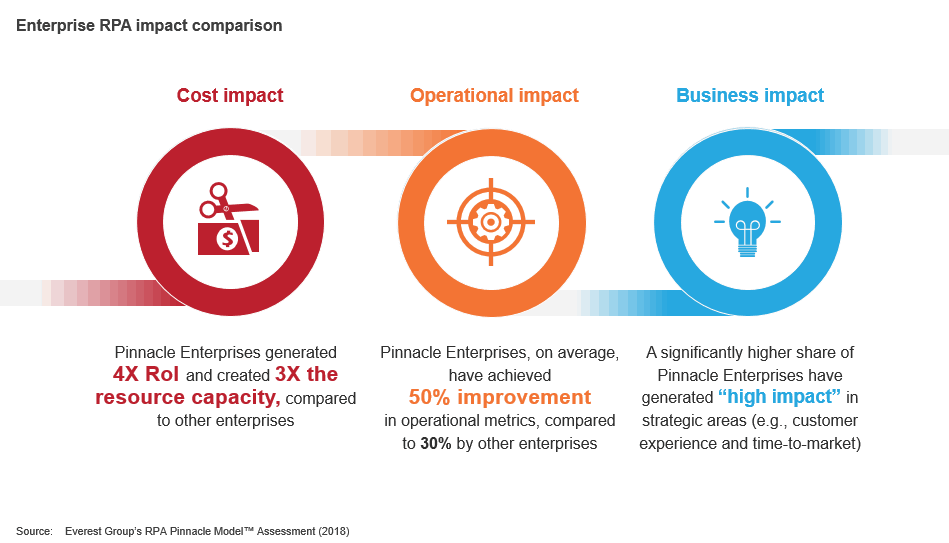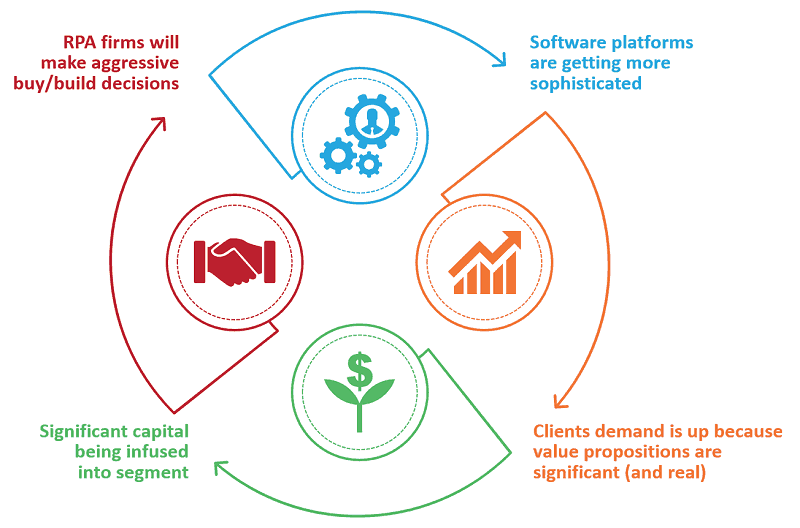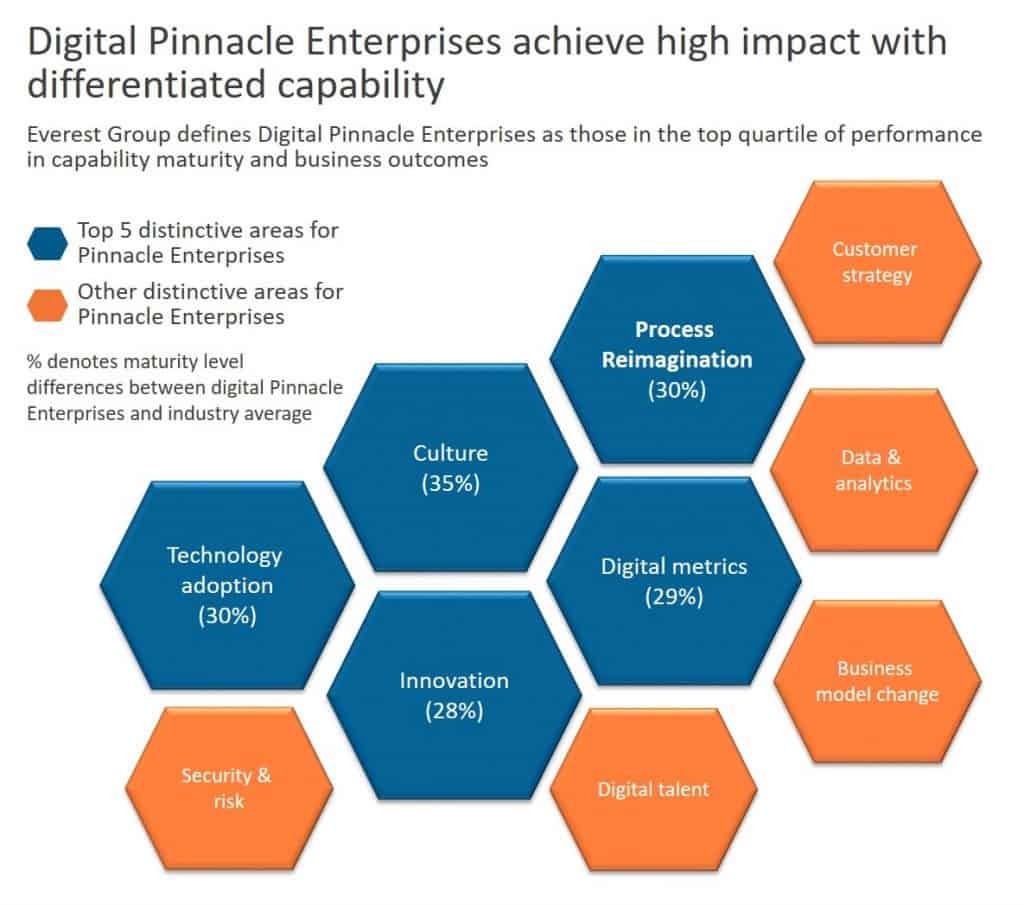March 20, 2018
Now that we’ve put the finishing touches on our first-of-its kind assessment of enterprise RPA adoption around the globe, we’re seeing a full dismantling of several RPA assumptions and myths.
After surveying enterprises across a wide swath of industries, we have finalized the analysis and are releasing a goldmine of data and insights for enterprises looking to take a confident step forward in their journey toward Pinnacle RPA status. While the full results are laid out in our Enterprise RPA adoption | Pinnacle Model™ Analysis for 2018, I want to provide an overview of some of the findings here that I think you’ll find interesting.
RPA adoption is size- and industry-agnostic across enterprises
Enterprise RPA adoption is not a trend for big organizations in certain industries to pursue while smaller players maintain the status quo. Stagnation is a recipe for complete disaster in the industry’s rotation to digital. In our research, we’ve found that all types and sizes of enterprises are adopting RPA. This includes both top-down adoption across the org to improve overall speed to impact and bottom-up adoption where segments of orgs are adopting RPA to optimize specific processes. Regardless of size and type, enterprises are going all-in and getting results.
So, what happens if you’re not a part of that? Well, you can imagine the way Toys ‘R Us execs felt when they realized they were about to watch the titan enterprise enter into complete oblivion. Part of that is due to a failure to transform the model in the age of digital transformation. Enterprises that are not thinking in the direction of some level of enterprise RPA adoption are in danger of charting a course to that same end. The takeaway here is clear: adopt or be disrupted.
RPA Pinnacle Enterprises™ significantly excel in three impact areas
RPA Pinnacle Enterprises exceed others in the three critical areas of cost impact, operational impact and business impact. Statistically, they have seen a 50% improvement in operational impact alone. Those enterprises not at the Pinnacle level, but who are still adopting RPA, have seen a 30% improvement.

So the news for all enterprises moving along the RPA adoption curve is either good or great – there is really no bad news here. This is a fascinating and important statistic for all enterprises, and warning of what’s to be missed out on for those on the sidelines of adoption.
RPA and massive job loss is a myth
Automation is soon to be a driving factor for sweeping job losses across all industries. While that’s great fodder for headlines, blog titles, and social media clicks, the actual enterprises we’re talking to aren’t singing that song at all. I talk about this more in a recent blog, The Robots are Coming – Should You Fear or Welcome Them, but in essence, enterprises are talking about reskilling, upskilling, and enhanced training; they’re not talking about eradication of the human element.
As you might have heard, in the midst of this rotation to digital across all industries, we’re actually experiencing a labor shortage in the United States and Europe. We’re just not seeing it in the headlines.
Instead of the comparison to Skynet or some other Terminator-related theme, a better comparison for RPA and jobs is one that involves our actual history. When you review what happened in the industrial revolution, you don’t find the entire workforce replaced by machines (Of course, individuals were impacted at various levels). Instead, you find massive reskilling and upskilling so that the new technology can complement and improve human effort – AND by improving productivity, allow our companies to continue to grow even in the face of a labor shortage. That’s much more along the lines of what enterprises are discussing, planning, and doing. Unfortunately, news like that doesn’t make the cut for trending stories.
RPA Pinnacle Enterprise webinar
Many more in-depth details about these enterprise RPA trends are laid out in our Pinnacle Model analyses. Moreover, this research is brimming with data-packed analysis on what is truly differentiating Pinnacle RPA enterprises from the rest of the pack. The kind of analysis that all enterprises are clamoring for as they determine where they are on their journey to Pinnacle, and decide what the next best steps should be. We also hosted a webinar on April 12 that dispels popular myths surrounding RPA using our fact-based analysis from the RPA Pinnacle Model study. Watch the webinar replay.
Please contact us with any questions you may have about our Pinnacle Model analyses, or reach me directly at [email protected].



